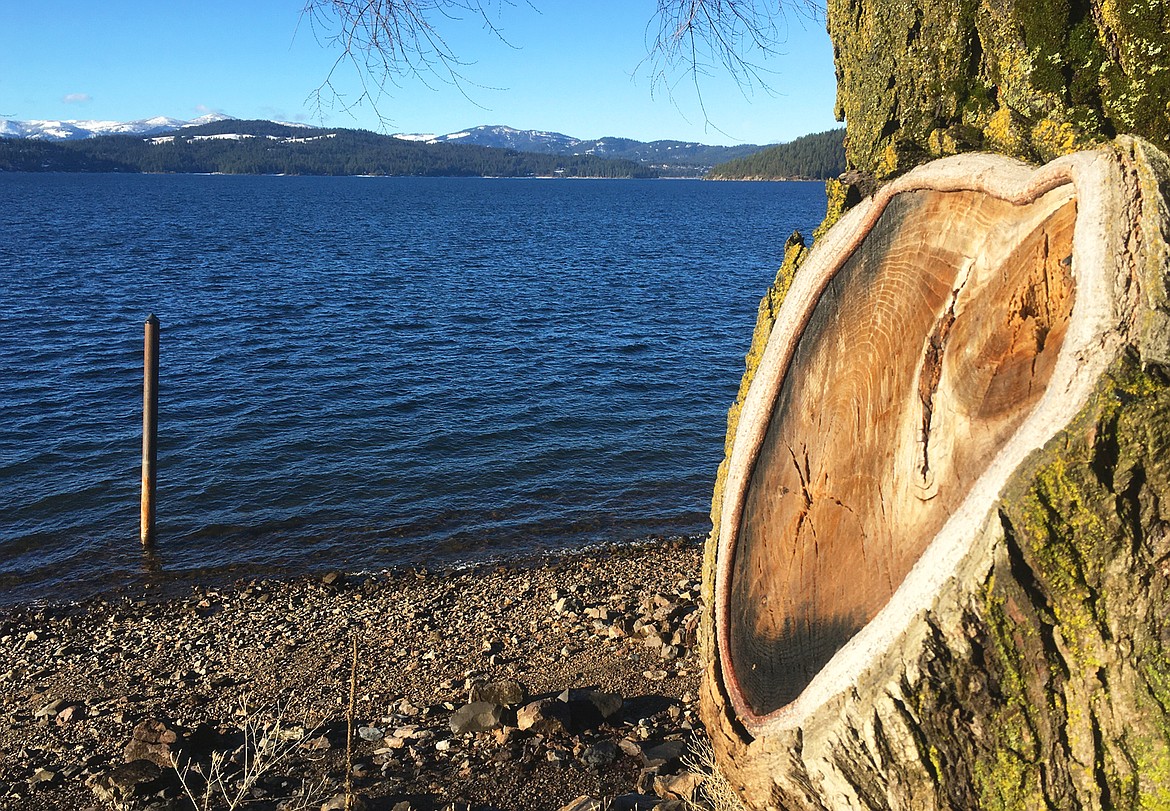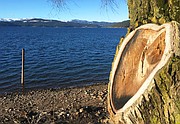Lake study begins digging deep
Lake Coeur d’Alene is key to Kootenai County’s cultural and economic identity.
The threat of resurfacing nutrient and metal contamination on the lake’s floor could challenge its long-term vitality, state, federal and tribal officials agree.
Through a two-year, $770,000 state-directed water quality study by the National Academies of Sciences, national, state, and local interest groups are taking a deep dive into the toxins that rest in the lake’s bed. The group met Wednesday for some six hours, then three more hours Friday.
The state has become increasingly concerned about Lake Coeur d’Alene’s negative shift in trophic levels, which indicate the degradation of the lake’s health over time, Idaho Department of Environmental Quality Regional Administrator Dan McCracken said Friday.
Lake Coeur d’Alene’s metal and nutrient content has become a hodgepodge catch-all of mining, logging, growth, and recreational deposits, officials said. The region’s nickname of the “Silver Valley” is a fond term to residents, with underlying attribution to the massive silver mining activity in the late 1800s by sites like the Bunker Hill Mine and Smelting Complex in Kellogg.
In its heyday, Bunker Hill released thousands of tons of lead, zinc, and toxic elements that eventually, through water runoff, have made it into the lake’s tributaries. That led to the area becoming a nationally recognized Superfund site for its contamination through the Silver Valley.
“We’ve estimated about 48,000 metric tons of contaminated sediment and 180 metric tons of particulate lead flow into the lake every year," said Kim Prestbo, remedial project manager of the U.S. Environmental Protection Agency. “We estimate that 80% of the optimal habitat is contaminated with lead concentrations.”
Prestbo has managed the design and construction of groundwater collection at the Bunker Hill Superfund Site and spent years investigating its effects on the Lower Coeur d’Alene River Basin. She noted that sediment erosion from the riverbed of the Lower Coeur d’Alene River contributes toxic metals to the waterway.
As that erosion continues, Prestbo noted, the waterway is likely to see increased toxin levels including lead into the system. Through U.S. Geological Survey and independent data, Prestbo estimated 72,000 tons of contaminated sediment are transported into the system each year — 44% from upstream, 7% from bank erosion, and 49% scoured from the riverbed between Cataldo and Harrison..
“Due to these deeper legacy deposits, lead concentrations within the sediment that is transported will probably increase until the river ultimately erodes down to the native material,” she said.
USGS, EPA, IDEQ, and Coeur d’Alene Tribe data support the presence of metals and nutrients like phosphorus, nitrogen, iron, lead, zinc, mercury, and arsenic in Lake Coeur d’Alene’s floor sediment.
Over a decade ago, the Coeur d’Alene Tribe and state began drafting a Lake Management Plan to evaluate and protect water quality in the lake and identify mineral sources to its water. For the Tribe, the lake and its tributaries have acted as the “lifeblood of the people,” said Phil Cernera of the Coeur d’Alene Tribe and National Tribal Water Council.
For decades — if not centuries — there has been a strained relationship between the Tribe, the state of Idaho, and Kootenai County regarding lake management. That includes a lawsuit filed by the Tribe against the state for control of Lake Coeur d’Alene in the 1990s, which Cernera said was in part a response to water quality and protection issues.
“The Coeur d’Alene people recognized the problem when it started. We’ve studied this place to death,” Cernera said. “Thirty years ago, when I started working on this project, people were screaming about no more studies. Well, we’re embarking on another study now.”
A significant thorn in the Tribe’s memory is the 1993 and 2009 Lake Management Plans created by Coeur d’Alene interests in collaboration with the state and federal agencies. Cernera said the Tribe has in the past tried to use the plan as a call for further action by interest groups but would fail because of a lack of support monetarily or administratively.
“We’ve been asking the EPA for several years — after our data came in saying that our water quality is declining — to address the issue,” Cernera said. “We need, and we hope, that this evaluation proves our data is sound. We need your (the NAS committee’s) conclusions to be straightforward because if they’re not, we’re just going to be bickering over them.”
Now, decades later, IDEQ’s Coeur d’Alene Lake Management Plan Coordinator Jamie Brunner said the plan should seriously be revisited.
“We are seeing trends going in the direction you don’t want to see them go, and those triggers are what we have in the Lake Management Plan,” she said. “It basically serves as an early warning system, laying out what levels of different water — called quality parameters — raise a red flag for us.”
The NAS’s committee will next meet in May. Recordings of Wednesday’s and Friday’s sessions will be available on the NAS website next week.



